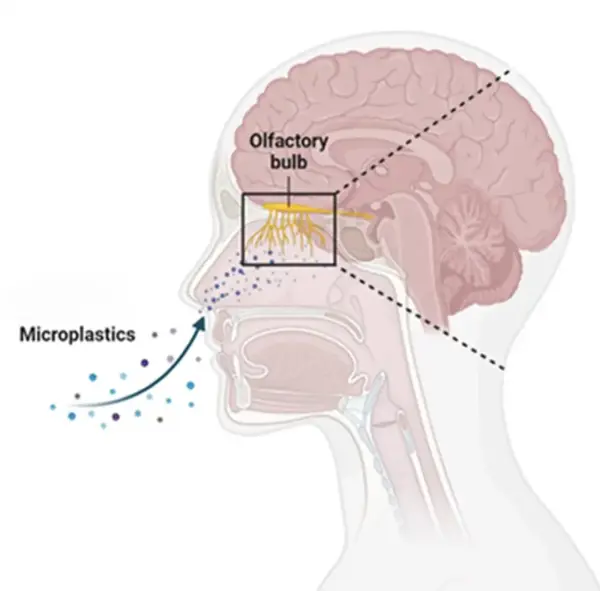Research published in Nature Medicine and a study commissioned by the Plastic Soup Foundation both provide compelling evidence that microplastics not only circulate in the body but also penetrate the brain, including the olfactory bulb—a critical region responsible for processing smell.
Microplastics found in human brain tissue
A groundbreaking study analyzed brain, liver, and kidney samples from individuals who died between 1997 and 2024. The findings were alarming: micro- and nanoplastic concentrations were significantly higher in brain tissue compared to other organs. The most commonly detected plastic was polyethylene, widely used in packaging and food containers. Additionally, individuals diagnosed with dementia exhibited microplastic levels up to six times higher than those without neurodegenerative conditions. While this does not establish causation, it highlights a worrying correlation that demands further investigation.
Plastic penetrates the brain through inhalation
A separate study conducted by Prof. Dr. Thais Mauad of the University of São Paulo, commissioned by the Plastic Soup Foundation, discovered microplastics in the olfactory bulb. Researchers analyzed brain samples from 15 deceased individuals and found 16 different synthetic polymers in eight of them, including polypropylene, nylon, polyethylene, and polyethylene vinyl acetate—materials commonly found in packaging, textiles, and household products. The presence of these plastics in the olfactory bulb strongly suggests that inhaled microplastics can bypass traditional protective barriers and enter the brain directly.
Complementary animal studies reinforce these concerns. Research from the University of Rhode Island in 2023 found that mice exposed to microplastics through drinking water exhibited behavioral changes, liver and brain biomarker alterations, and symptoms resembling dementia. Older mice showed more pronounced effects, raising concerns about the long-term impact of microplastics on human cognitive function.
The growing threat of microplastics in the body
Microplastics have now been found in the blood, lungs, placenta, testicles, breast milk, and even the heart. With over 500 million tons of plastic produced annually and more than 16,000 chemicals identified in plastics—4,000 of which are hazardous—the infiltration of plastic into human biology is undeniable.
A call for systemic change
These findings underscore the urgent need for global action. The Plastic Soup Foundation continues to advocate for a strong UN Global Plastics Treaty that addresses the impact of plastics on human health. Reducing microplastic pollution must be a top priority to protect current and future generations. Step one is to reduce our consumption of single use plastics, especially for (food)packaging and fast fashion.






